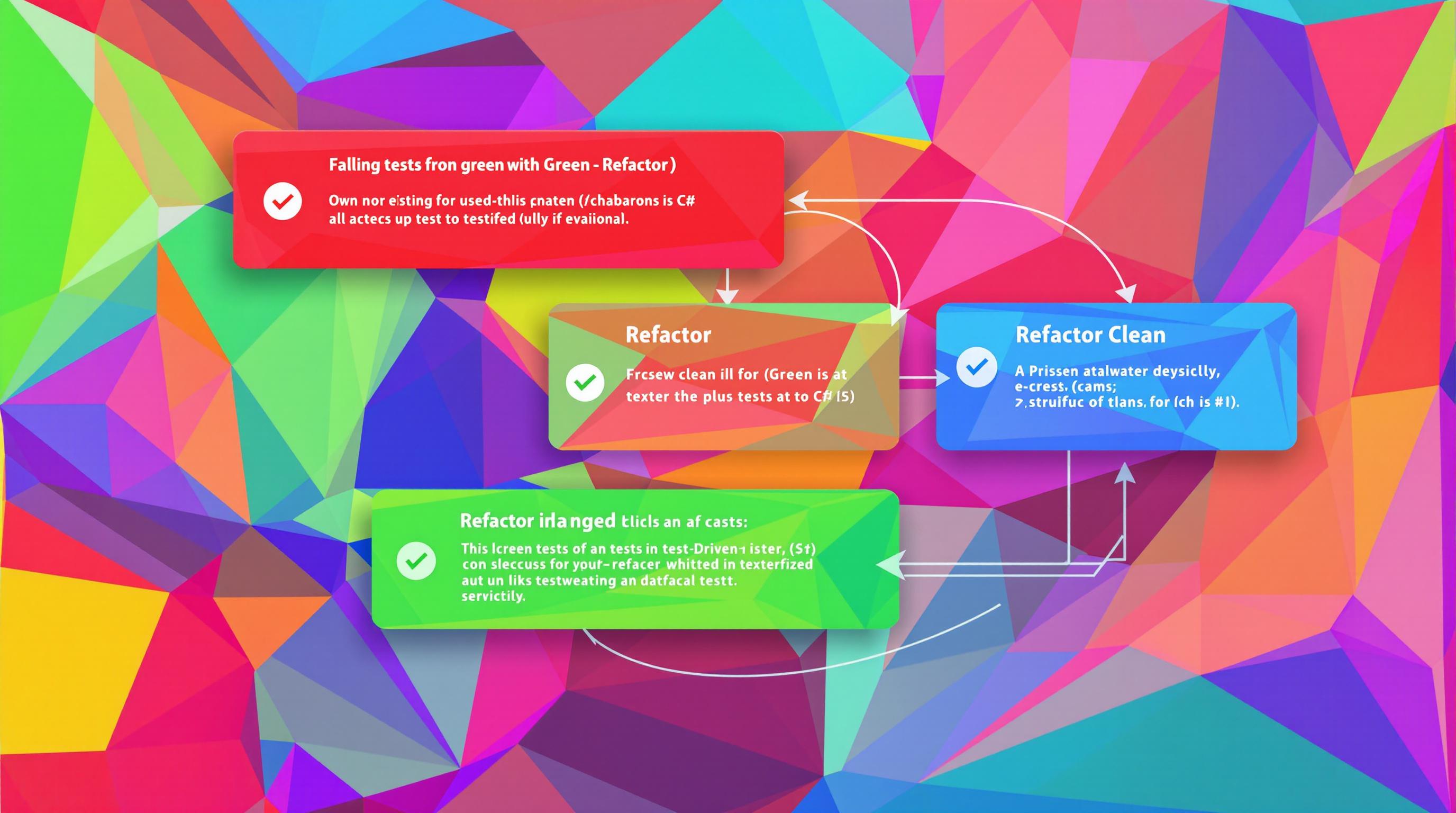Want to create killer API docs in 2024? Here's what you need to know:
- Use OpenAPI Specification
- Add interactive features
- Explain authentication clearly
- Include error handling details
- Provide code samples in different languages
- Use version control for documentation
- Use AI tools for documentation
- Improve developer experience
- Keep documentation current
- Ask for user feedback
| Tip | Why It Matters |
|---|---|
| OpenAPI Spec | Standard format, auto-generates docs |
| Interactive Features | Lets devs test API calls in-browser |
| Clear Authentication | Prevents confusion, improves security |
| Error Handling | Helps devs troubleshoot issues |
| Multi-language Samples | Makes your API accessible to more devs |
| Version Control | Tracks changes, syncs with API updates |
| AI Tools | Saves time, improves accuracy |
| Better UX | Makes docs easier to use and understand |
| Current Docs | Prevents frustration, keeps API usable |
| User Feedback | Catches blind spots, drives improvements |
These tips will help you create docs that developers actually want to use. With the API market set to hit $3 trillion by 2025, good documentation is more important than ever.
Related video from YouTube
Use OpenAPI Specification

OpenAPI Specification (OAS) is a game-changer for API docs. It's the standard way to describe RESTful APIs.
Why use OpenAPI in 2024?
- It's machine-readable (JSON or YAML)
- Generates docs automatically
- Keeps your API description and behavior in sync
- Has major industry backing (Google, IBM, Microsoft)
To use OpenAPI:
- Pick a version (3.0 or 3.1)
- Use YAML (it's easier to read)
- Define your API in three parts:
- Meta info
- Endpoints
- Reusable components
But OpenAPI isn't just for docs. It lets you design your API before coding. This catches issues early and helps teams work together.
| Feature | What It Does |
|---|---|
| Standard format | Makes APIs easier to understand |
| Code generation | Speeds up SDK development |
| Mock servers | Helps with testing and prototypes |
| Interactive docs | Improves developer experience |
OpenAPI creates a single source of truth for your API. It streamlines development, boosts communication, and leads to better APIs overall.
2. Add Interactive Features
Want to make your API docs more than just a wall of text? Add interactive features. They're a game-changer.
The big one? An API playground or "Try it Out" feature. It lets devs test API calls right in the docs.
Take SendGrid's docs. You can plug in your API key and test code snippets in the browser. Pretty cool, right?
"SendGrid's API documentation is a great example of this. Users can put in their API key and then test out the code and get a response. The code is editable, so users can make changes to see what effects these changes have." - Terence Bennett, CEO of DreamFactory
Why's this hands-on approach so great? It helps devs:
- See how the API works in real-time
- Play with different parameters
- Get actual responses without leaving the docs
Tools like SwaggerHub and Document360 offer similar features. SwaggerHub's "Try it out" function shows response headers, body, duration, and even gives you the cURL command.
Here's a quick look at some tools with interactive features:
| Tool | Key Interactive Features |
|---|---|
| SendGrid | In-browser code testing with editable snippets |
| SwaggerHub | "Try it out" function, mock server for testing |
| Document360 | "Try-it" function for testing API endpoints |
| Stoplight | Embedded "try-it" consoles in user guides |
Adding these features? Keep these tips in mind:
- Include server info in your API definition for the "try it out" feature to work.
- No production server? Use a mock server.
- Think about adding your brand's look to keep things consistent.
3. Explain Authentication Clearly
Authentication is your API's bouncer. It keeps the riffraff out and lets the VIPs in. But if your auth docs are a mess, developers will be left scratching their heads at the door.
Here's how to make your authentication docs shine:
1. Start simple
"Authentication is your API's ID check. It's how we know you're you. Without it, anyone could pretend to be you and mess with your stuff."
2. Show them the money (API keys)
"Getting your API key is easy:
- Log in
- Hit 'Settings' > 'API Keys'
- Click 'Generate New Key'
- Copy it and guard it with your life"
3. Examples, examples, examples
Here's how to use your shiny new key in Python:
import requests
headers = {
'Authorization': 'Bearer YOUR_API_KEY_HERE',
}
response = requests.get('https://api.example.com/data', headers=headers)
4. Compare auth methods
| Method | Good For | Not So Good For |
|---|---|---|
| API Key | Quick setup, public data | Sensitive operations |
| OAuth 2.0 | User data, write ops | Simple read-only tasks |
5. When things go wrong
If auth fails, you'll see something like this:
{
"error": "Unauthorized",
"message": "Bad API key. Double-check and try again."
}
6. Keep it secret, keep it safe
"Your API key is like your toothbrush. Don't share it, and definitely don't stick it in public repos. If it leaks, change it ASAP."
4. Include Error Handling Details
Errors happen. But good error docs can make your API a breeze to use. Here's how to nail it:
Standardize error responses
Keep it consistent. Use a structure like this:
{
"status": "error",
"code": "USER_NOT_FOUND",
"message": "User '12345' doesn't exist.",
"timestamp": "2023-12-08T12:30:45Z",
"path": "/api/v1/users/12345"
}
Use clear HTTP status codes
Match errors with the right codes:
| Code | Meaning | Use Case |
|---|---|---|
| 400 | Bad Request | Invalid input |
| 401 | Unauthorized | Bad auth |
| 403 | Forbidden | No permission |
| 404 | Not Found | Resource missing |
| 500 | Server Error | Server issues |
Make errors actionable
Don't just state the problem. Offer a fix:
{
"status": "error",
"code": "INVALID_EMAIL",
"message": "'notanemail' is invalid.",
"details": "Use a valid email (e.g., user@example.com)."
}
Document common errors
List frequent errors with:
- Error code
- Description
- Causes
- Solutions
Show error handling examples
Give devs code snippets:
try:
response = api.get_user(user_id)
except ApiError as e:
if e.status_code == 404:
print(f"User {user_id} not found. Check the ID.")
else:
print(f"Error: {e.message}")
Track errors
Set up logging. Spot patterns. Improve your API.
5. Provide Code Samples in Different Languages
Code samples are key for API docs. They show devs how to use your API in their favorite language. Here's why multi-language examples matter:
- They make your API accessible to more devs
- They speed up integration (copy-paste for the win!)
- They cut down on errors
So, how do you do this right?
Use language-specific SDKs
Give devs Software Development Kits (SDKs) for popular languages. It saves them from writing tons of boilerplate code.
APIMatic's Code Generator makes SDKs for PHP, Ruby, Python, C#, Java, and JavaScript/TypeScript.
Add a language switcher
Put in a dropdown menu so devs can switch between languages. It's a big UX win.
ShipEngine's docs nail this:
| Feature | Details |
|---|---|
| Languages | 13 options (cURL, C#, Go, Java, JavaScript, PHP, Python, Ruby, Swift, etc.) |
| Selection | Dropdown next to 'Copy' button |
| Update | All code blocks change with new language pick |
Keep it consistent
Use the same structure and style for all language examples. It helps devs who use multiple languages.
Test everything
Make sure all code samples work and are up-to-date. Devs often copy-paste these, so they need to be spot-on.
Use real-world examples
Show how to solve common problems with your API. It helps devs see how to use it in real life.
Mailchimp's API docs do this well. They offer examples in various languages with a consistent structure.
sbb-itb-29cd4f6
6. Use Version Control for Documentation
Version control isn't just for code. It's a must-have for API docs too. Using systems like Git helps you track changes, work together, and keep your docs in line with your API.
Why it's important:
- Track who changed what and when
- Go back to old versions if needed
- Work on docs as a team
- Keep docs and API changes in sync
Setting Up Version Control for Docs
1. Pick a system
Git is the go-to choice. GitHub, GitLab, and Bitbucket all work well for doc version control.
2. Create a repo
Make a separate repository just for your API docs.
3. Use branches
Make different branches for each API version.
4. Write clear commits
This helps you follow changes over time.
5. Review changes
Use pull requests to check doc updates before they go live.
Real-World Example: Riskified

Riskified, a fraud prevention company, used Git with Salto for their NetSuite setup. This helped them:
- Understand why changes were made
- Link changes to business needs
- Keep a full record of updates
"Using Git for versioning—not just writing things down—makes your daily work easier, helps teams stay on the same page, and keeps your audits simple." - Erik Zaadi, Riskified Engineering
Tools for Doc Version Control
| Tool | What It Does Well |
|---|---|
| GitHub Pages | Works with GitHub, supports Markdown |
| Read the Docs | Works with Git/SVN, handles versions |
| Doctave | Uses branches for versions |
| Antora | Manages docs across multiple repos |
7. Use AI Tools for Documentation
AI is changing the game for API documentation. It's saving time, boosting accuracy, and keeping docs fresh.
Here's the scoop:
- AI can draft docs from your code
- It spots errors and suggests clearer wording
- Some AI tools tailor content to user skill levels
- As your API evolves, AI flags outdated sections
Real-world examples:
HyperWrite's API Documentation Improver enhances existing docs for clarity and readability. Just input your docs, let AI work its magic, review, and implement.
Swimm keeps docs in sync with your codebase, great for complex legacy code.
GitHub Copilot, while mainly a coding assistant, can suggest comments and explain code snippets.
Mintlify generates and updates docs straight from your codebase, supporting various languages.
AI's Impact on Documentation
| Aspect | Without AI | With AI |
|---|---|---|
| Creation Time | Hours/days | Minutes/hours |
| Accuracy | Human error prone | More consistent |
| Updates | Manual, delayed | Automated, real-time |
| Personalization | One-size-fits-all | User-adaptable |
AI tools can slash doc creation time by half and boost quality. The Nielsen Norman Group found AI assistance can improve document quality from 3.8 to 4.5 on a 1-7 scale. Plus, good docs can cut new developer onboarding time by up to 50%.
But remember: AI's not perfect. Always review and enhance AI-generated content with your team's expertise.
8. Improve Developer Experience
Want your API docs to be more dev-friendly? Start with a clean landing page that helps users find stuff fast.
Here's how to make your docs better:
-
"Getting Started" guide: Help newbies jump in quickly.
-
Core concepts page: Sum up key ideas and best practices.
-
Use visuals: Add diagrams and highlight code. It breaks up text and makes important stuff pop.
-
Short, copyable code: Keep examples brief and easy to use.
-
Make it searchable: Add a search function and link related content.
-
Show comments by the code: It helps explain typical use cases.
-
Help all skill levels: Your docs should work for beginners and pros alike.
-
"Run in Postman" button: Let users test your API right away.
"Actually, I'm not on a documentation page to read — I want to find a solution quickly and use it." - Katalin Nagygyörgy, User Experience Strategist
Real-world wins:
PayPal cut their "Time to First Call" from hours to 1 minute using Postman Collections. Over 100,000 Postman users have forked or watched these collections.
Cisco uses Postman Visualizer to show API response data as charts and tables. It makes their APIs easier for non-developers like network engineers to use.
9. Keep Documentation Current
Out-of-date API docs? That's a recipe for frustrated developers and unused APIs. Here's how to keep your documentation fresh:
Automate and version control
Use tools to auto-generate docs when your API changes. Treat docs like code: store them in Git and use pull requests for updates.
Create a changelog
List version numbers, new features, bug fixes, and breaking changes. Let developers know what's new.
Notify and get feedback
Tell users about updates via email, in-app notifications, or your developer portal. Set up a way for them to report issues or suggest improvements.
Regular reviews and updates
Don't let docs gather dust. Schedule audits to check for outdated info. When you update your API, update your code samples and tutorials too.
"If your API is being documented by hand, it's going to be out of date and inaccurate the first time you change anything, If ever." - Scott Feinberg, API Architect, New York Times
10. Ask for User Feedback
Getting input from developers who use your API is crucial. Here's how to do it:
Make feedback easy
Add simple ways for users to share thoughts in your docs:
- "Was this helpful?" buttons
- Comment boxes
- Quick 1-2 question surveys
Go beyond the docs
Actively seek feedback:
- Run user interviews
- Monitor Stack Overflow and GitHub discussions
- Analyze support tickets
Act on what you learn
1. Prioritize feedback
Focus on high-impact, frequent issues.
2. Make regular updates
Set a schedule to review and implement feedback.
3. Close the loop
Let users know when you've made changes based on their input.
Real-world example
Stripe uses a simple "Was this page helpful?" widget. In 2022, this led to over 1,200 doc improvements in a year.
"User feedback is the lifeblood of great documentation. It helps us catch blind spots and continuously improve." - Amber Feng, Head of Developer Products at Stripe
Conclusion
API documentation is becoming more important as we head into 2024 and beyond. The tips we've covered are just the start of a bigger change in how we create API docs.
The API market is booming. It's expected to hit $3 trillion by 2025. This growth is pushing new ways to make and maintain API docs.
AI and machine learning are shaking things up. They're making it easier to create docs and track how they're used. Take Stripe, for example. Their simple "Was this page helpful?" button led to over 1,200 doc improvements in 2022.
APIs are now being treated like products. Companies are offering different levels of access and subscription plans. This means docs need to be top-notch and user-friendly.
API docs also need to work for all kinds of users. Andre Sluczka, Founder & CEO of Jetic, says:
"LLMs can play a pivotal role in the engineering team's handling of scale by offering tools that expedite the development process and enhance accessibility and accuracy."
This matters because there are more apps than ever. Microsoft predicted in 2020 that we'd see 100 million new apps each year. That's more apps in five years than in the last 40!
To keep up, companies are using advanced API management tools. These tools help track usage, control access, and keep things secure - all key for good API docs.
Going forward, the winners in API documentation will be those who can adapt quickly. They'll update docs fast, use feedback, and embrace new tech.


